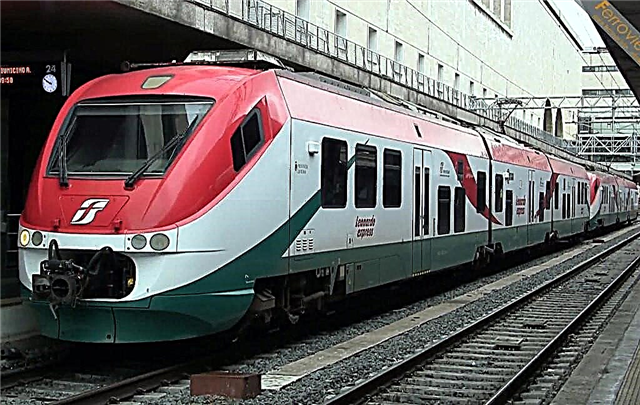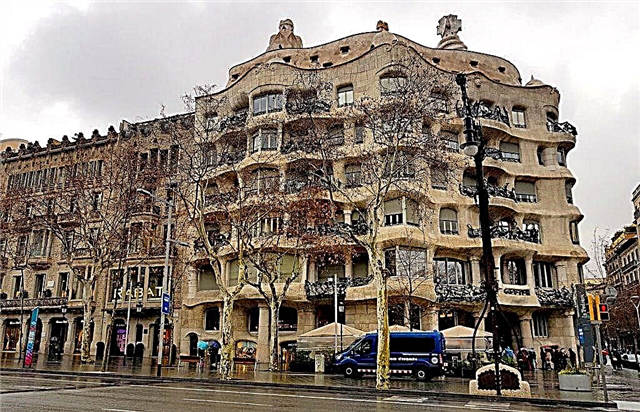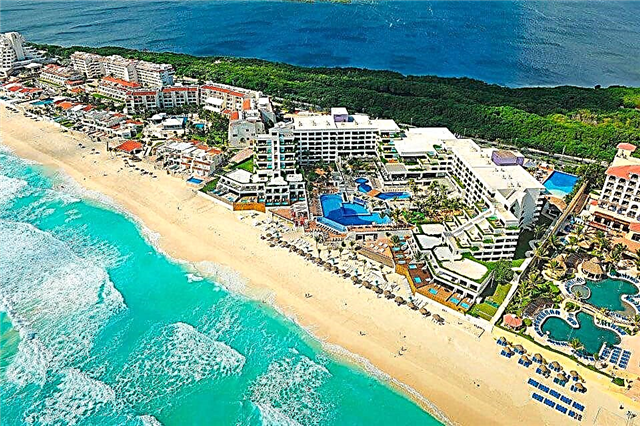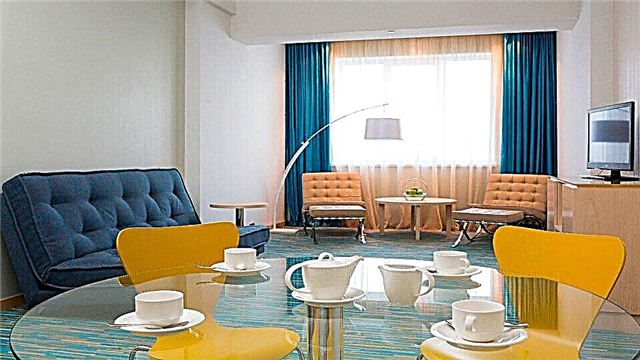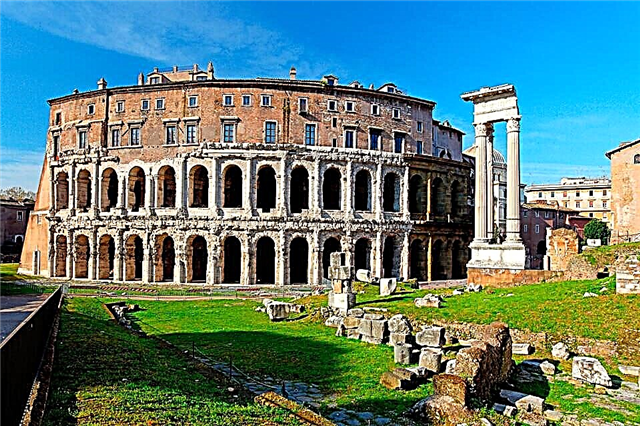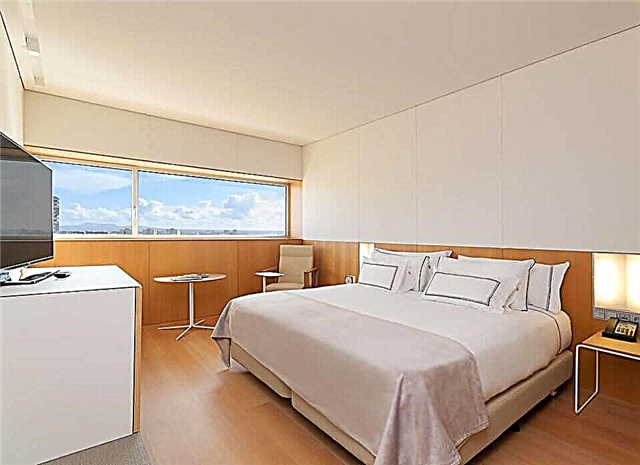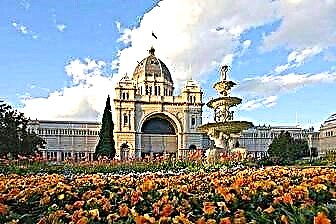In the first half of the 19th century, a huge piece of gold was found in the Australian state of Victoria - the largest in the world at that time. This event gave impetus to the beginning of the gold rush, numerous waves of emigration from Europe and the heyday of Melbourne. Over the course of two centuries, the city grew rich and eventually turned into the most prosperous and comfortable metropolis in Australia.
Melbourne is compared to the well-fed and prosperous cities of Switzerland, in some respects it even surpasses its European competitors. First of all, it is the industrial, economic and financial center of the country. But the city has something to attract tourists as well: the historical center, consisting of buildings of the 19th century, smoothly turns into modern quarters, museums and galleries organize interesting exhibitions, and upscale restaurants will delight gourmets with world cuisine.

The best hotels and hotels at affordable prices.
from 500 rubles / day
What to see and where to go in Melbourne?
The most interesting and beautiful places for walking. Photos and a short description.
Federation Square
The central square of Melbourne hosts hundreds of different events every year. The site has interesting modern architecture and is home to cinemas, galleries, restaurants, a museum, and public meeting areas. The square occupies an entire city block, on one side it is bounded by the Yarra River. An active restructuring of space has been carried out since the end of the 80s.

Royal Botanic Gardens
The gardens are located in central Melbourne on the south bank of the Yarra River. On their territory grow species collected from all over the Australian continent, as well as brought from other parts of the world. The main activity of botanical gardens is the conservation and cultivation of plants brought to Australia from other places, as well as scientific research in the field of detection and identification of unknown species.

Memorial monument
Monument erected in honor of fellow citizens who died in the First World War. Behind the scenes, the monument is considered to be dedicated to all Australians who have died in armed conflicts. The structure was erected in the 30s. XX century designed by veterans D. Wardrop and F. Hudson. The classical architecture of the Athenian Parthenon was taken as a model. The monument is located on a hill in the Royal Gardens.

National Gallery of Victoria
The oldest public gallery on the Australian continent. It was founded in the second half of the 19th century. The museum was opened a decade after the proclamation of the state of Victoria as an independent colony. At that time, Melbourne was actively developing and turning into a large and wealthy city. Wealthy citizens at their own expense purchased and donated works of art to the gallery. Among the exhibits are antique artifacts, canvases by European artists, works by Australian masters.

Royal Exhibition Center
The exposition is housed in a stately Victorian building of the late 19th century, which has been awarded the status of a UNESCO monument. In the middle of the 20th century, they wanted to demolish the building, but in the end it was decided to organize an exhibition center on its territory. The center received the prefix "Royal" in 1884 thanks to Queen Elizabeth of England. The premises of the complex are used for various exhibitions.

Melbourne Museum
A large museum, divided into several thematic exhibitions. The building also houses a research center, an IMAX cinema and an amphitheater. The museum presents both historical collections, telling about the history of Melbourne, and natural science, where you can look at the skeletons of extinct dinosaurs. Separate rooms are home to indigenous cultural centers in Australia.

Princess Theater
Victorian opera house, built in the middle of the 19th century. The building was rebuilt and reconstructed several times, the last restoration was carried out in 1989. The theater even has its own "phantom of the opera", for which they always leave free space in the auditorium. According to legend, the cast came from the singer F. Baker, who died on stage while playing a role in the opera Faust in 1888.

State Library of Victoria
The library is considered one of the most impressive book collections in Australia. The building in the classical style was erected in the middle of the 19th century by D. Reed. Initially, it housed the Melbourne Museum and the National Gallery of Victoria, but later they moved to other locations. The library contains about 1.5 million books. The building is surrounded by a park of sculptures, where the works of masters of the XIX-XXI centuries are installed.

Melbourne aquarium
A modern oceanarium located on the banks of the Yarra in the center of Melbourne. In the aquarium, you can see representatives of the fauna of the southern seas and Antarctica. For the inhabitants of the Arctic waters, real harsh conditions have been created with snow and low temperatures. Sharks, penguins, turtles, tarantulas, scorpions, and various types of fish live here. The Oceanarium was opened in 2000 and is considered one of the best in the world.

St Paul's Cathedral
Cathedral of the Anglican Church, built in the Gothic style. The building is located in the historic center of Melbourne and, along with other structures of past centuries, forms the cultural heritage of the city. The cathedral was erected in the late XIX - early XX centuries, at first it was the tallest structure in the city, but modern high-rise buildings gradually overshadowed it from the views of passers-by. An organ made by master T. Lewis was delivered from England especially for the church.

St patrick's cathedral
A Catholic cathedral in a non-Gothic style, built for the needs of the Irish settlers. The cathedral was given the status of a "minor basilica", that is, the Pope can stay here in case of his arrival in Melbourne. The mosaic for interior decoration was made in Venice; instead of the standard stained-glass windows, amber glass was installed on the windows. The construction of the cathedral lasted 40 years and was completed in 1939.

Eureka Tower
The second largest skyscraper on the Australian continent, it reaches a height of 297 meters. The building was built in 2006 by the local architectural agency. The name "Eureka Tower" was given in honor of the gold prospector uprising of 1854 in Victoria. The skyscraper has 92 floors. One underground floor and 9 ground floors are occupied by parking, the rest of the floors are residential.
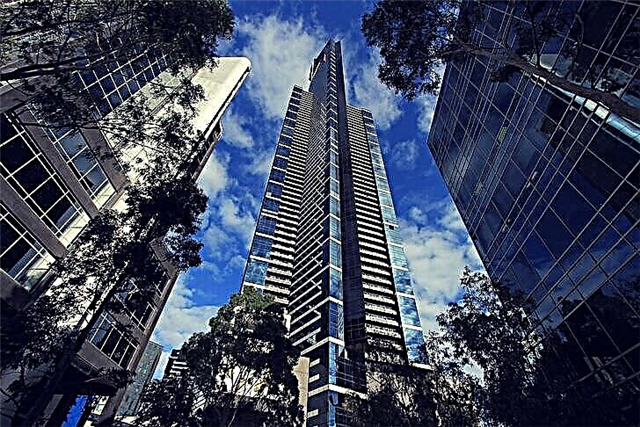
Flinders Street
Melbourne's main railway station located in the city center. In 1854, a wooden station, the first in Australia, was located on this site. In 1882, it was decided to build a full-fledged train station, and 37 years later, the first steam locomotive departed from Flinders Street. After just a few years, the station became the busiest in the world. The building was renovated in the 70s. XX century at the request of the public (initially, the authorities wanted to demolish the outdated structure).

Queen Victoria Market
A large market in the city center selling food and delicacies from all over the world, including Turkish sweets, Italian prosciutto and Russian buckwheat. There are also rows with shoes and clothes, products of local aborigines, animal skins. The market offers a wide variety of fruits, cheeses, seafood, sauces, smoked meats. The prices here are slightly lower than in the supermarket, but there are always a lot of people and quite noisy.

Captain James Cook's Cottage
Small stone mansion located in the eastern part of Melbourne. This is the home of James Cook's parents, which was originally located in the English village of Great Ayton. In 1933, the house was bought by the Australian government and moved to Melbourne. This event was timed to coincide with the celebration of the 100th anniversary of the founding of the city. The money was provided by a local entrepreneur, R. Grimweid.

Old Melbourne Prison
A museum complex located on the territory of a former prison. The building was built in 1841 and was used to house prisoners and the military. In 1924, the institution was closed, and in 1972 a museum was opened in it, where prison attributes are exhibited: personal belongings of criminals, death masks and other horror. Thousands of tourists are eager to visit this place due to rumors of ghosts that inhabit the gloomy corridors.

Albert park
The track of the international Formula 1 race, where the Australian Grand Prix races have been held since 1996. In the 50s. In the 20th century, this track hosted the Melbourne Grand Prix races, but at that time it was an unpopular event due to the high costs for the riders and the continent's remoteness from Europe. Albert Park is an urban trail surrounded by green spaces, it is laid around an artificial lake.

Melbourne Cricket Ground
The site was originally intended for playing cricket, but has gradually turned into a large multifunctional complex where football matches, rugby championships, concerts and various cultural events are held. The stadium was built in the middle of the 19th century and modernized several times during the 20th century. The modern arena accommodates about 100 thousand spectators, some events gathered up to 130 thousand people.

Melbourne Zoo
The oldest zoo in Australia, founded in 1862. At first, the zoo served as a temporary shelter for domestic animals imported from other continents. On the territory of the zoo, animals went through an adaptation period and later went home. Over time, exotic species began to appear, and the zoo acquired its modern look. It is home to tigers, lions, monkeys, giraffes, elephants, Madagascar lemurs, rare birds and the inhabitants of the Australian savannah.

Crown Casino
One of the continent's finest gambling houses, a large entertainment complex located in the heart of Melbourne. Hundreds of thousands of tourists and locals visit this casino every year. There are more than 2.5 thousand machines and 350 tables for gambling on the territory. There is also a restaurant, bowling club and nightclubs. The Korona complex houses the Palladium, the largest concert venue in the city.


